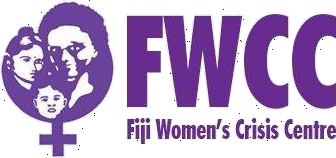Violence against women exists in most societies and is gaining increasing recognition as a human rights issue, as a reproductive health issue, and as a developmental issue that affects not just women themselves, but society as a whole.
Let us consider the direct and indirect costs of violence against women and children on victim/survivors as well as the community at large.
The costs of violence on women covers a broad spectrum including chronic ill-health, the death of the victim and the murder of the abuser.Studies undertaken in several countries indicate that there is a strong correlation between domestic violence and homicide. Victims/survivors of violence may suffer from severe injuries and/or psychological damage, may turn to drugs, commit suicide, or be hospitalised. Global studies show close links between domestic violence and female suicide. In America, one fourth of suicide attempts by American women and half of all suicide attempts by African American women are preceded by abuse (Stark, 1984). Amongst Indo-Fijians families in which someone has committed suicide, 41% cite marital violence as the cause (Haynes R.H., Suicide in Fiji: A Preliminary Study, 1984). The World Bank, in its World Development Report (1993) concluded that rape and domestic violence were significant causes of disability and death among women of reproductive age in both the industrial and developing world. In cases of domestic violence, women have less bargaining power with regards to their sex life and so are more likely to have regular pregnancies and less control over family planning choices. Pregnant women in violent relationships risk having miscarriages and may face serious reproductive health problems. Some children who observe domestic violence may incorporate violence into their own behaviour, thereby continuing the cycle of violence.
For many women, the psychological effects of domestic violence are more crippling than the physical effects. Fear, anxiety, fatigue, post traumatic stress disorder and sleeping and eating disturbances are common long-term reactions to violence. Abused women may become dependent and suggestible and they may find it difficult to make decisions on their own. (Lori Heise, Violence Against Women: The Hidden Health Burden, 1994, p.18). Women who are victims/ survivors of violence bear the costs of seeking medical treatment as well as a loss of income or employment due to having to take time off work because of the violence. This leads to loss to employers and decreased productivity caused by absenteeism, and poor performances in the workplace by both the abusers and victims/survivors of violence.
Women who have been raped or sexually assaulted bear the physical injury and profound emotional trauma such as nightmares, depression, inability to concentrate, sleeping and eating disorders, feelings of anger, humiliation and self-blame. In addition, 50-60% experience severe sexual problems, including fear of sex (Becker, Incidence and Types of Sexual Dysfunctions in Rape and Incest Victims, 1982, 65-74). Studies show that the traumatic consequences of being raped can remain with the victim/survivor for many years. Apart from the physical injury and emotional trauma, survivors of sexual assault face the risk of sexually transmitted diseases (STDs), including Acquired Immuno Deficiency Syndrome (AIDS). The possibility of unwanted pregnancy in these cases is also substantial. The consequences of rape for victims in society that place a high value on virginity are severe. In these countries, women may be beaten, murdered or driven to suicide because of the dishonour that rape or illegitimate pregnancy has brought on the family.
There are many costs born by the community once violence against women becomes reported. The public sector bears the cost of health care which includes doctors, community and welfare workers and hospital costs such as surgery, x-rays, and dental costs. A considerable amount of police time is spent investigating crimes of violence against women and children. Sexual Offences Units are also set up and staffed to deal with cases involving the sexual assault of women and children. Special training is required for personnel in these Units. Although a vast number of reported cases do not end up in court, once it does, law enforcement costs include the costs of processing restraining orders and the court process itself. The public sector bears the cost in cases where Legal Aid or a Public Legal Advisor is needed by the victim/survivor.
In cases where domestic violence has led to the breakdown of a relationship the legal process often extends to maintenance and access cases being heard in the courts. Costs are also accrued if cases are appealed and go to higher courts. Women who leave relationships because of domestic violence bear the costs of relocating and setting up new lives for themselves and their children. Violence against women comes with many costs to victims/survivors, the public sector and the community and steps must be taken to combat this. This would include:
Reform including the introduction of appropriate legislation on domestic violence and the reform of rape laws which remain prejudicial towards victims/survivors
Health care system reform including training to ensure that victims/survivors of gender-based violence are not further victimised by the health care system
Compulsory gender sensitivity training for all service providers including the police, judiciary, medical personnel, and welfare workers.
Supporting the work of organisations like the Fiji Women’s Crisis Centre which provides much needed crisis intervention and counselling services for women who are victims/survivors of violence.
Violence against women will continue to take lives, destroy families and affect society at large.As long as it continues unchecked, we will continue to channel scarce resources into our health, legal, law enforcement and welfare systems to address what is a largely preventable social illness. The Fiji Women’s Crisis Centre will try to address some of these issues in it’s current National Research on Domestic Violence and Sexual Assault. A component of this research will focus on the effects of violence on women’s health and another will look at the health and development costs of violence against women.
